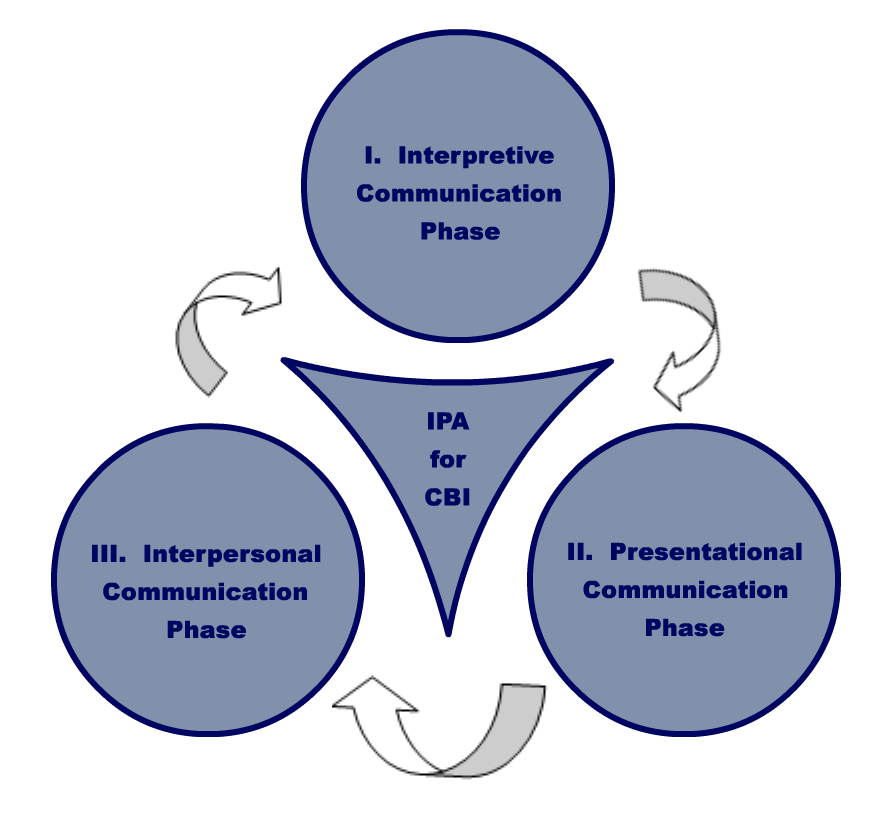 |
|
||||

|
Example 1: Barrier Free by Kazue Oda Context: This assessment will take place in a US university setting. The proficiency level of students is intermediate on both speaking and writing, according to the ACTFL guidelines. Most of the students are in their fourth semester of Japanese, and all of the students have mastered hiragana, katakana and at least 200 basic kanji characters when this assessment takes place. In addition, they already have mastered basic Japanese conjugations, i.e. present/past tense of long/short form as well as te-form for verbs, adjectives and nouns. In this unit, the grammar focus is on the potential form “~emasu/~emasen.” Class consists of 15 students, including some International students from various countries. The Integrated Performance Assessment (IPA) begins with the interpretive task which will take place after the following activities: (Students have just learned the grammar “~になります (becomes ~) as in “古くなります↔新しくなります (becomes old/new) 、便利になります↔不便になります (becomes convenient/inconvenient) 、親しくなります(becomes close (get to know someone well))友達になります(becomes friend) etc. over the past week.)
Overview of the Task: (provided in English) Longevity among Japanese people is well known in the world: the average life expectancy for women is 85 years old, and for men 78 years old, and it is considered the longest in the world. In fact, almost ¼ of the Japanese population is over 65 years old! In addition to the large population of elderly people, there are many people with disabilities in Japan. Recently remarkable efforts have been made in Japan to eliminate existing “barriers” and help people with disabilities gain access to buildings or facilities. This concept is called “barrier-free” and it originated from the United States in the 1950’s. The sign with a person in a wheelchair in parking lots or in a public bathroom probably seems familiar to you. In fact, the concept of “barrier-free” is much older in the States and naturally more barrier-free environments are provided for those who are disadvantaged, compared to the current situations in Japan. However, there is so much more to be done in the US society to achieve a true “barrier-free” society where all the people with disabilities can live as comfortably and safely as people without disabilities. In order to create/develop such a society, it is crucial for us to critically look at our current living environment and become sensitive to various problems/issues that people with disabilities face on a daily basis. First, you will read about the concept of “barrier-free” and become familiar with different groups of disadvantaged people in Japan. Then, in a small group, you will make a video film to inform Japanese college students about the barrier-free environment currently in place in the United States. You will then look at the pictures of your town and discuss problems from a perspective of a person with disability and discuss solutions to those problems with your partner.
Glisan, E., Adair-Hauck, B., Koda, K., Sandrock, P., & Swender, E. (2003). ACTFL integrated performance assessment. The American Council of the Teaching of Foreign Language. Kitagawa, E. (2000). Beautiful life [Recorded by T. Kimura & T. Tokiwa] [Video]: Juneon Entertainment. Ministry of Land, Infrastructure and Transport: Kyusyu Regional Development Bureau. (1995). Minna ni yasashii michi to machi (road and town that are friendly/kind to everyone). Retrieved March 5, 2005, from http://www.qsr.mlit.go.jp/n-michi/barrierfree/michi_machi/index.html Mitsui_Online. (n.a.). Mitsui Virtual Model House. Retrieved April 15, 2005, from http://www.mitsuihome.co.jp/product/virtual/index.html Rubistar. (n.d.). Rubistar: Create rubrics for your project-based-learning activities. Retrieved March 5, 2005, from http://rubistar.4teachers.org/index.php. The Institute for Areal Studies Foundation. (2005). ABC for UD: Minna de Universal Design. Retrieved March 11, 2005, from http://www.ias-ud.com Virtual
Assessment Center. (n.d.). Evaluation examples. Retrieved March 10,
2005, from /assessment/VAC/evaluation/e_1.html
Navigation: Follow the IPA process or go directly to the section that is of most interest to you by clicking on the appropriate category
|
||||
